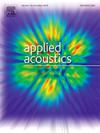Research on the effect of auditory and visual environmental factors on patients’ waiting experience in healthcare
IF 3.4
2区 物理与天体物理
Q1 ACOUSTICS
引用次数: 0
Abstract
Background
Implementing visual and auditory stimuli is recognized as an effective strategy to improve patients’ waiting experiences. However, the impact of window size and sound category on psychological responses has received scant attention. Besides, there is a lack of audio-visual interaction research in healthcare settings.
Objectives
This experimental study investigated the main and interactive effects of window size and sound category on occupants’ emotional state, environmental evaluation, and perceived waiting time.
Methods
In this study, a between-subjects laboratory experiment was conducted utilizing virtual reality. A total of 387 subjects were randomly assigned to one of 16 experiment conditions, which were combinations of four different window size scenarios and 4 distinct sound categories, to test the effects of window size and sound type as well as their interactions.
Results
The statistical findings indicated that both the visual factor (the window size) and the auditory factor (the sound category) exert statistically significant influences on psychological indicators. Moreover, a significant interaction effect between the visual and auditory factors was observed on subjects’ emotional states. Notably, mechanical sound was found to counteract the restorative effects of window, whereas increasing window size in anthropogenic sound can lead to enhanced emotional benefits.
Conclusions
The study provides insight into the role of window size and sound category in affecting occupants’ waiting experience, emphasizing the interactive effects between visual and auditory elements. It is anticipated that the research will contribute to the multisensory literature and provide evidence-based guidance for the design of restorative waiting environments.
求助全文
约1分钟内获得全文
求助全文
来源期刊

Applied Acoustics
物理-声学
CiteScore
7.40
自引率
11.80%
发文量
618
审稿时长
7.5 months
期刊介绍:
Since its launch in 1968, Applied Acoustics has been publishing high quality research papers providing state-of-the-art coverage of research findings for engineers and scientists involved in applications of acoustics in the widest sense.
Applied Acoustics looks not only at recent developments in the understanding of acoustics but also at ways of exploiting that understanding. The Journal aims to encourage the exchange of practical experience through publication and in so doing creates a fund of technological information that can be used for solving related problems. The presentation of information in graphical or tabular form is especially encouraged. If a report of a mathematical development is a necessary part of a paper it is important to ensure that it is there only as an integral part of a practical solution to a problem and is supported by data. Applied Acoustics encourages the exchange of practical experience in the following ways: • Complete Papers • Short Technical Notes • Review Articles; and thereby provides a wealth of technological information that can be used to solve related problems.
Manuscripts that address all fields of applications of acoustics ranging from medicine and NDT to the environment and buildings are welcome.
 求助内容:
求助内容: 应助结果提醒方式:
应助结果提醒方式:


